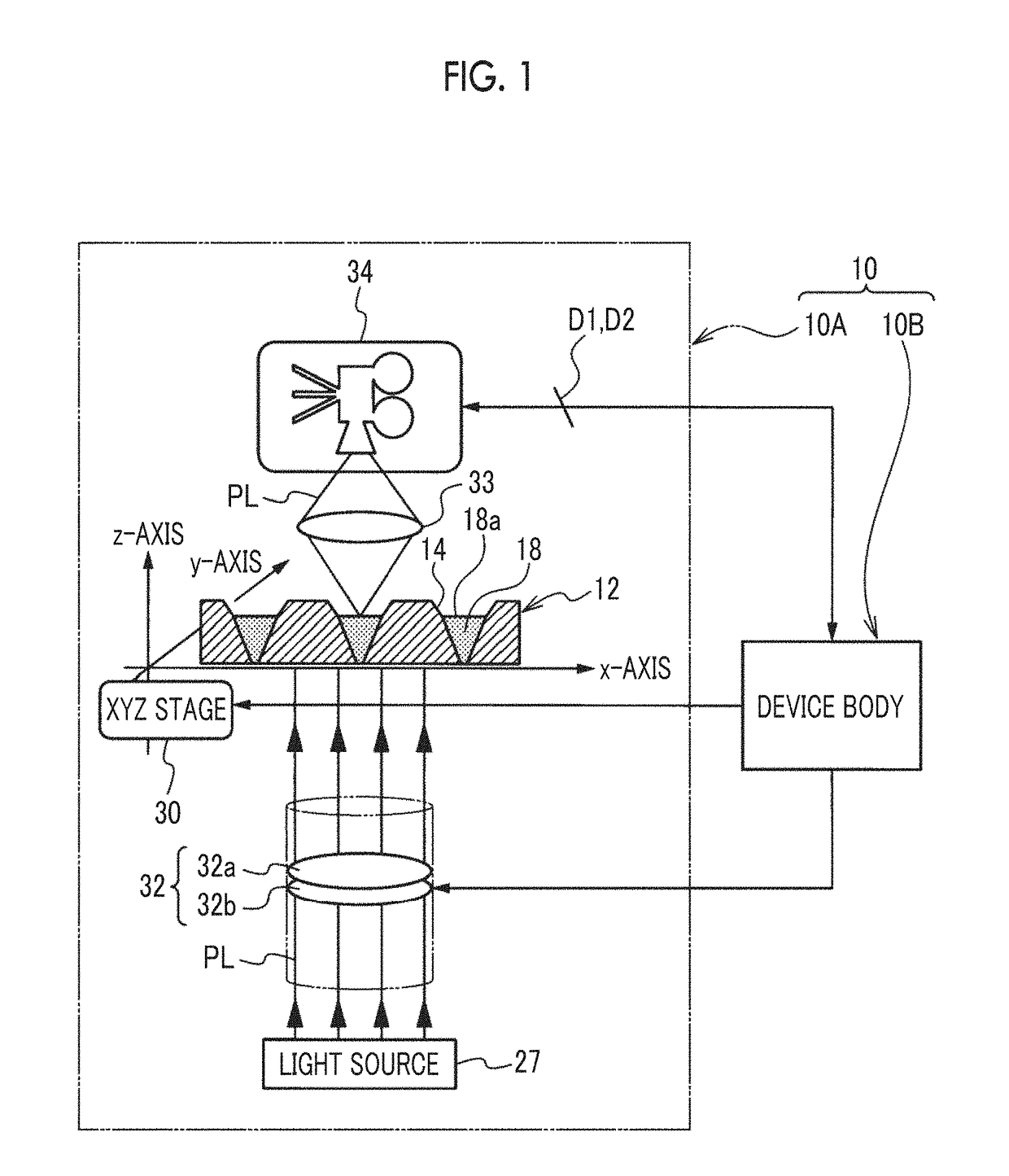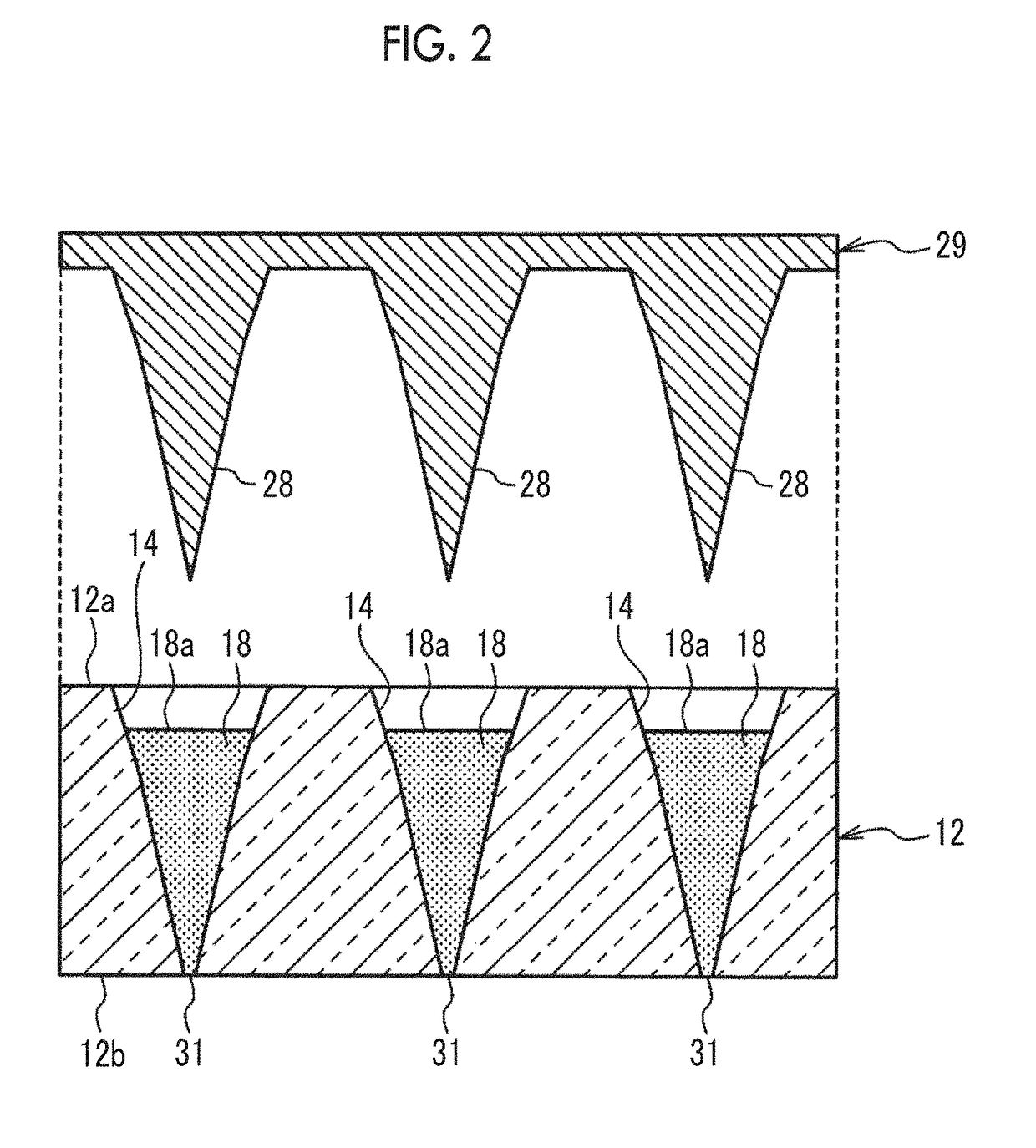Measurement method, measurement device, and program
a measurement device and measurement method technology, applied in the direction of liquid/fluent solid measurement, instruments, packaged goods types, etc., can solve the problems of high accuracy, high speed, and inability to measure the volume of aqueous drug solution with high precision and high speed, and achieve the effect of reducing the calculation process, detecting the distance at each position more accurately, and high accuracy
- Summary
- Abstract
- Description
- Claims
- Application Information
AI Technical Summary
Benefits of technology
Problems solved by technology
Method used
Image
Examples
second embodiment
[0251]FIGS. 22A and 22B are illustrative diagrams illustrating a process of detecting the distance H using the measurement device 10 of a second embodiment. In the first embodiment (including the modification example thereof, hereinafter the same), as illustrated in FIGS. 11B and 11C, the distance detection unit 59 detects the distance H at each position in the drug surface 18a using [General Formula 5] on the assumption that the incident light intensities (incidence intensities) of the measurement light PL in the wavelength range λ1 and the measurement light PL in the wavelength range λ2 incident on the second surface 12b are both “I0”. On the other hand, the distance detection unit 59 of the second embodiment detects the distance H at each position in the drug surface 18a on the assumption that the incident light intensities (incidence intensities) of the measurement light PL in the wavelength range λ1 and the measurement light PL in the wavelength range λ2 incident on the second ...
third embodiment
[0264]FIGS. 23A and 23B are illustrative diagrams illustrating a process of detecting the distance H in the measurement device 10 of the third embodiment. In each of the above embodiments, [General Formula 5] and [General Formula 13] are derived from a formula in which the transmitted light intensity of the measurement light PL in the wavelength range λ2 is divided by the transmitted light intensity of the measurement light PL in the wavelength range λ1 as shown in [General Formula 4] and [General Formula 12] to obtain the distance H. On the other hand, in the third embodiment, the distance H is obtained from a difference between the transmitted light intensity of the measurement light PL in the wavelength range λ1 and the transmitted light intensity of the measurement light PL in the wavelength range λ2 in consideration of an influence of stray light indicated by a sign “φ” (a suffix is omitted), as illustrated in FIGS. 23A and 23B. Here, the stray light is light different from the...
fourth embodiment
[0281]FIGS. 24A, 24B, and 24C are illustrative diagrams illustrating a process of detecting the distance H in the measurement device 10 of the fourth embodiment. In each of the above embodiments, the distance H at each position of the drug surface 18a in the needle-like recess 14 is detected using the measurement light PL in the two wavelength ranges λ1 and λ2, whereas in the fourth embodiment, the distance H at each position of the drug surface 18a in the needle-like recess 14 is detected using the measurement light PL in three wavelength ranges λ1, λ2, and λ3. Here, the measurement light PL in the wavelength range λ3 corresponds to a third measurement wave of the present invention. For example, in this embodiment, the wavelength range λ1 is 1350 nm, the wavelength range λ2 is 1450 nm, and the wavelength range λ3 is 1550 nm.
[0282]The measurement device 10 of the fourth embodiment has basically the same configuration of the measurement device 10 of each of the above embodiments exce...
PUM
| Property | Measurement | Unit |
|---|---|---|
| weight | aaaaa | aaaaa |
| weight | aaaaa | aaaaa |
| wavelength | aaaaa | aaaaa |
Abstract
Description
Claims
Application Information
 Login to View More
Login to View More - R&D
- Intellectual Property
- Life Sciences
- Materials
- Tech Scout
- Unparalleled Data Quality
- Higher Quality Content
- 60% Fewer Hallucinations
Browse by: Latest US Patents, China's latest patents, Technical Efficacy Thesaurus, Application Domain, Technology Topic, Popular Technical Reports.
© 2025 PatSnap. All rights reserved.Legal|Privacy policy|Modern Slavery Act Transparency Statement|Sitemap|About US| Contact US: help@patsnap.com



